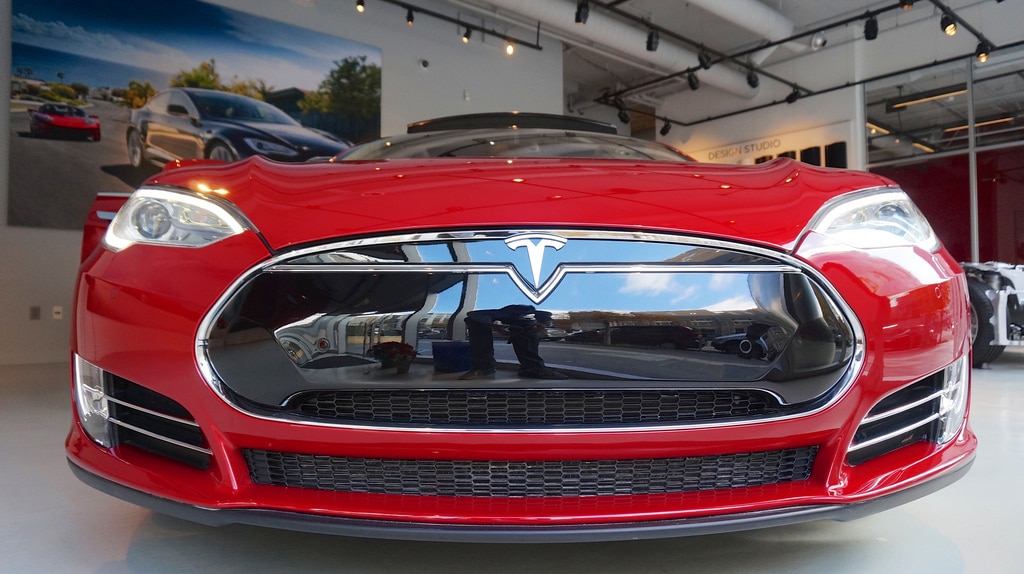There isn’t much of SolarCity left these days. Brothers Lyndon and Peter Rive, who founded the company, are leaving this summer, and a number of other top SolarCity executives are already gone. The door-to-door sales which helped build SolarCity to the nation’s largest distributed solar company is now gone, replaced by sales through Tesla’s retail outlets and online business.
The company is also moving away from the third-party solar model which it pioneered to a higher portion of direct sales, while scaling back its ambition for growth. Even the SolarCity brand will soon disappear.
Such changes point to SolarCity’s new role as only one star in the constellation of Elon Musk’s clean energy and transportation businesses under Tesla. The electric vehicle (EV), battery and now solar company has been focused on the roll-out of its mass-market Model 3, with the first cars rolling off the assembly lines into the waiting arms of customers in late July.
Tesla is pouring massive amounts of capital into this endeavor, with its Q2 loss alone exceeding $400 million. To ensure that it has adequate resources for the ramp of production, Tesla announced a billion dollar stock and convertible bond issue in March, and today upped the stakes with plans for a $1.5 billion issue, “to strengthen its balance sheet during this period of rapid scaling with the launch of the Model 3, and for general corporate purposes”.
And as it prioritizes ramping of Model 3 production and its battery “Gigafactory” in Nevada, Tesla is increasingly emphasizing that its solar business must be less of a drain on its finances in the near term. All three of the main changes that the company has made to its solar deployment strategy – cutting door-to-door sales, increasing the share of direct purchases and slowing its ambition for growth – point in the direction of increased short-term profitability.
This underscores one of the weaknesses of the third-party solar model. While such businesses amass long-term value by means of building up a stock of leases, they inevitably suffer short-term losses. This dynamic has in turn led to much of the financial innovation within third-party solar, as SolarCity and other companies, have turned to securitization as a means to finance every-growing portfolios of new solar projects by selling shares in portfolios of already deployed systems.
In Q2 results show Tesla continuing this trend, with reports that it has sold an equity interest in a portfolio of solar leases for gross proceeds of $313 million.
But not all of the cash the company is raising is going to the Model 3, as the solar portion of Tesla’s business has its own financing needs. Even though a non-profit connected to the State University of New York is footing the bill for the solar Gigafactory in Upstate New York, Tesla has a lot of work to do as it prepares to roll out the Solar Roof, which Tesla has begun deploying on a pilot basis on homes owned by Elon Musk and other executives.
This content is protected by copyright and may not be reused. If you want to cooperate with us and would like to reuse some of our content, please contact: editors@pv-magazine.com.









Tesla has focused on the wrong side of the solar system. Instead of the roof, it should be looking at the loads (appliances). Using PV to run 10 year old refrigerators and 12 year old air conditioners is the wrong strategy. Unless someone rounds up the leading appliance manufacturers and redesigns them with a PV/nature (i.e. Biomimicry) focus, it’s a real waist.
So true Rick. It should always be efficiency first, followed by renewable power. Simple changes, i.e. LED lighting, NEST controllers and appliance upgrades allow the use of LESS solar panels and optimizes energy use for the long term, saving money in the process.
GM Chevy Bolt is already on sale, NOW. It has longer range per charge than Model 3. GM is an established car company, with world wide dealership and service support resources. I’m saving money to get a Bolt next year.